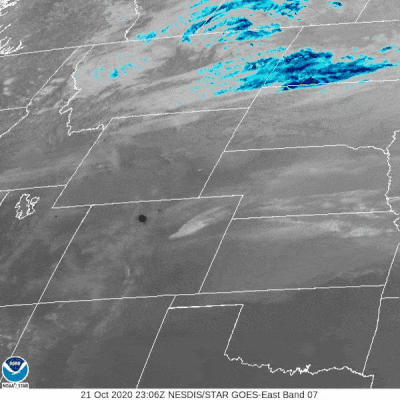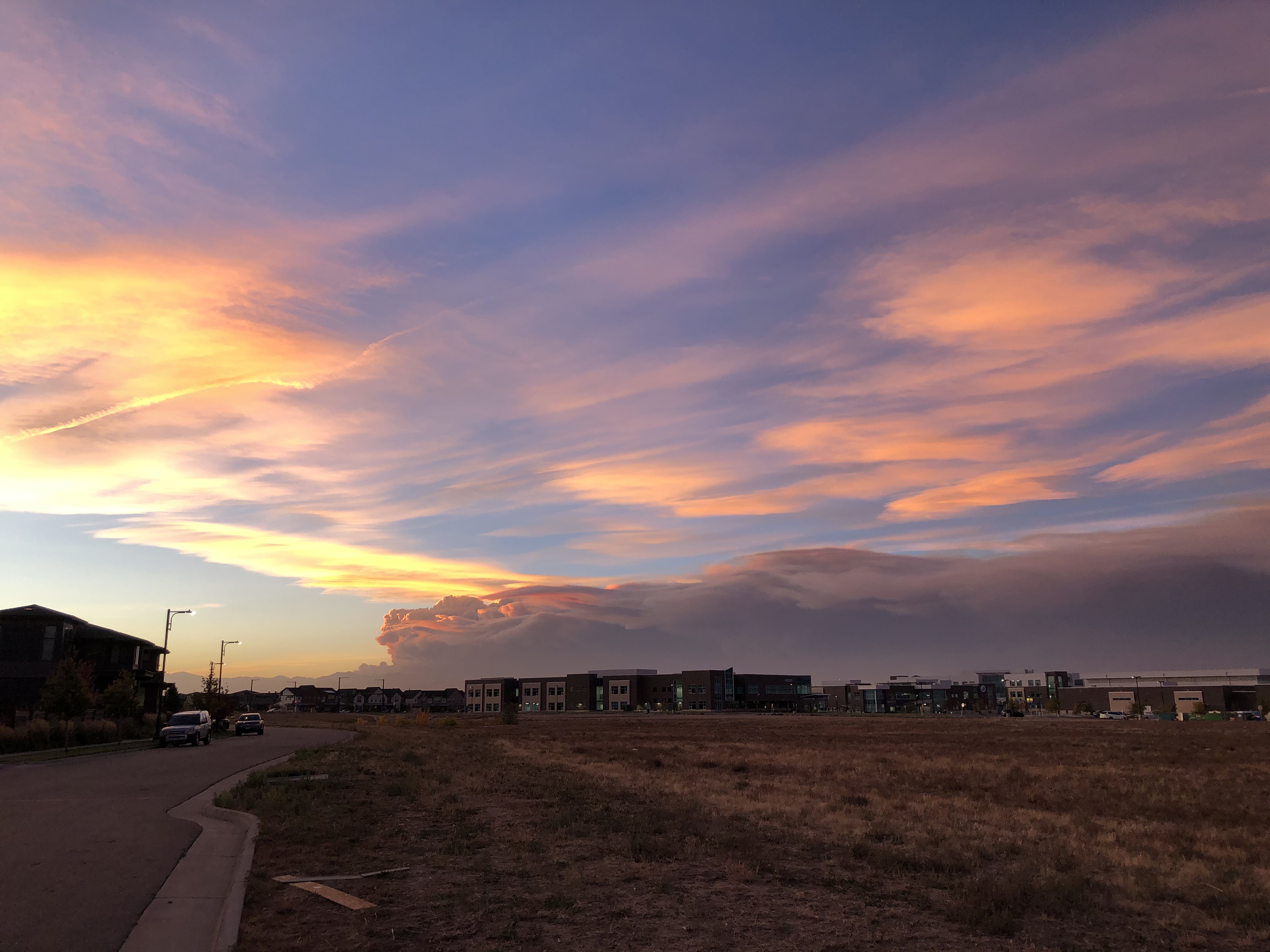Explosive growth of Colorado wildfire seen from space
The East Troublesome Fire grew by 6,000 acres in an hour on Wednesday.

A massive wildfire in Colorado is threatening homes and has closed a National Park after it ballooned in size, growing by 6,000 acres (2,428 hectares) in an hour on Wednesday (Oct. 21).
The East Troublesome Fire has burned 170,163 acres (68,862.5 hectares) as of Friday morning and triggered evacuations stretching from the town of Grand Lake to the town of Estes Park, the gateway to Rocky Mountain National Park. The fire's boundary is only 11 miles (17 kilometers) from the largest wildfire in Colorado history, the Cameron Peak Wildfire, which has been burning since Aug. 13. There are fears that the two fires could merge, according to 9News.
The East Troublesome Fire began Oct. 14. Between Wednesday night (Oct. 20) and Thursday morning (Oct. 21), it exploded in size, from 24,000 acres (9,700 hectares) to more than 125,000 acres, according to 9News. On Wednesday night, the Grand County sheriff reported that in a single hour, the fire devoured 6,000 new acres. The origin of the fire is not known, but it is believed to be human-caused.
Related: Raging western wildfires in photos

The fire is now the second-largest in recorded Colorado history. All of the top fires by size in Colorado have happened in 2020: The Cameron Peak Fire, which has burned nearly 207,000 acres (83,800 hectares), is the largest ever. The third-largest is the Pine Gulch Fire, which burned 139,007 acres (56,254 hectares) near Grand Junction in July.
Infrared imagery from the National Oceanic and Atmospheric Administration (NOAA) GOES-East satellite shows the intense heat from the East Troublesome Fire spreading Wednesday and expanding rapidly as night fell on Wednesday night. Smoke from the fire was visible from Denver as the plume rose 40,000 feet (12,200 meters), according to the Washington Post.
Rocky Mountain National Park is closed due to fire activity, and parts of the fire have burned across Trail Ridge Road, the main vehicle route through the park, according to OutThereColorado. Grand County officials reported that there had not been any reported deaths from the fire as of Thursday afternoon, but that many structures had been damaged.
Sign up for the Live Science daily newsletter now
Get the world’s most fascinating discoveries delivered straight to your inbox.
According to 9News, high winds and dangerous weather conditions were expected on Thursday, which could make containment of both the Cameron Peak Fire and the East Troublesome Fire difficult. There are also three other largely uncontained wildfires burning in the state: The Calwood fire near Boulder, the Williams Fork fire in Grand County, and the Middle Forks fire in Routt County.
These unusually late fires have been stoked by drought conditions. All of Colorado is in drought, according to the Drought Monitor, with almost 22% of the state in the most extreme drought conditions. Much of Grand County, where the East Troublesome Fire is burning, is in extreme drought.
"Typically this time of year we're cooling off and starting to get wetter," Brian Fuchs, a climatologist with Drought Monitor, told Colorado Public Radio. "And that just hasn't happened yet."
According to the University of Colorado, Boulder Environmental Center, climate change is warming and drying Colorado, leading to shorter snow seasons and shrinking snowpack. Warmer temperatures also allow the mountain pine beetle (Dendroctonus ponderosae) to thrive at higher elevations. These beetles lay their eggs in pine trees, introducing a fungus that ultimately kills the trees. The dead trees left behind provide ready fuel for wildfires.
Editor's Note: This article was updated at 10:10 a.m. EDT on Friday (Oct. 23) to reflect changes in the fire's size and ranking in the state historical record.
Originally published on Live Science.

Stephanie Pappas is a contributing writer for Live Science, covering topics ranging from geoscience to archaeology to the human brain and behavior. She was previously a senior writer for Live Science but is now a freelancer based in Denver, Colorado, and regularly contributes to Scientific American and The Monitor, the monthly magazine of the American Psychological Association. Stephanie received a bachelor's degree in psychology from the University of South Carolina and a graduate certificate in science communication from the University of California, Santa Cruz.









